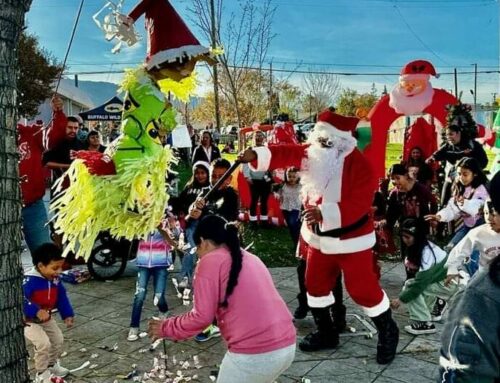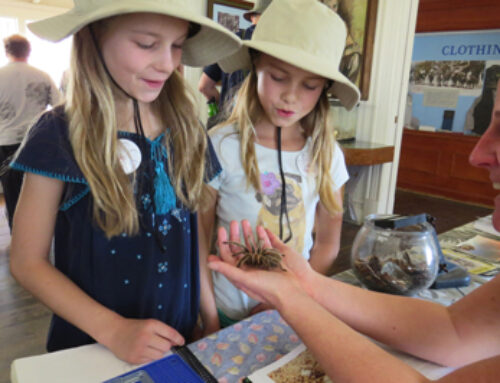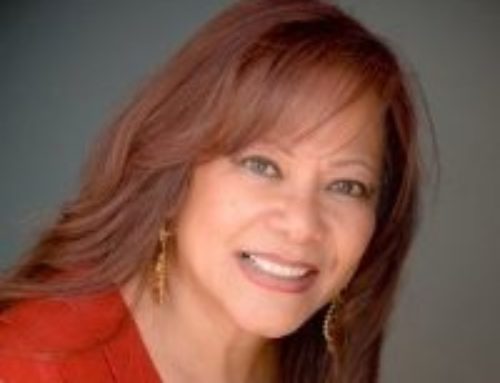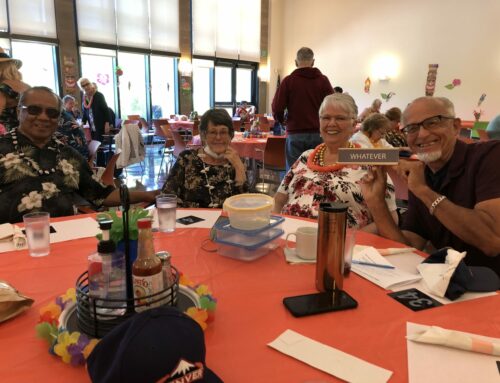Published in the Sept. 3 – 16, 2014 issue of Morgan Hill Life
By Staff Report:
Retired Morgan Hill cop Michael Brookman and Morgan Hill resident Ian Sanders love history. And in recent years, they’ve been putting together visual history books that include photos and postcards. Their latest endeavor is the book “A Hundred Years of Gilroy Hot Springs” which looks at the resort located deep in a canyon in the Diablo Mountain Range.

Photo by Marty Cheek
Michael Brookman and Ian Sanders appeared at BookSmart where they spoke about their latest book and autographed copies.
Morgan Hill Life asked Brookman about the book and his interest in history.
* How did you two decide to work together to put together a post-card history of the Gilroy Hot Spring?
We both collect antique picture post cards and focus on Morgan Hill and the South Santa Clara County. It feeds our passion as history buffs. Post cards were the FaceBook of the early 20th century and people shared everything with them. It gives us today a very homey and real image of times past.
We told a pictorial history of Morgan Hill in two volumes, “Views of Morgan Hill” and “More Views of Morgan Hill” and were looking for a new project. The golden era of spas and spring resorts in the U.S. had quite an impact on South Valley. The Gilroy Hot Springs was one of the most popular resorts on the west coast and seemed a natural topic for us.
* What was the process of finding the images for the book?
We started by culling our personal collections for cards. This gave us a working outline. Ian is an excellent researcher and went through libraries, old newspapers and advertisements for material. The book began to fill up. We were able to contact several people and families who were in some way connected to the hot springs. This gave us a lot of personal detail and really helped make the book come to life.
The panoramic views of guests in front of the hotel are some of the most interesting pictures. They weren’t easy to set up and it probably took some time to get the guests to pose in such numbers. The early shots show people and horses and later shots show people and cars – lots of cars! They show a significant shift in our society. Autos were the pride of their owners and treated much differently than today.
* How did the Gilroy Hot Springs get started as a resort in the Victorian period, and why did people come to the location for summer stays?
The end of the U.S. Civil War brought on an era of physical and spiritual healing. Medicine, scientific and otherwise, was advancing. Patent cures existed for everything under the sun. Hair loss, cancer, heart palpitations, alcoholism and love could all be addressed by taking doctor so-and-so’s magical elixir. We all know how good a hot bath can be, pairing that with the smell of sulphur and other compounds must mean that a plunge must have some healthful effect.
People flocked to “take the waters” and relieve themselves of many real and imaginary infirmities. That the Gilroy Hot Springs were in an idyllic setting far from the hustle of city life only added to the allure and relaxation.
* There is a lot of human history in your book. What story about the hot springs touched you personally?
The most touching story is the absolute love of the springs by the different owners and managers. It was obviously a business, but the feelings of those who ran it often went far beyond the money. They recognized the magic of the springs and pleasure it brought to the guests who enjoyed the waters, woods and many recreations available.
* The resort was used by Japanese-American citizens coming back after their World War II internment. Describe this component of the hot springs history and why it is relevant for Japanese Americans in the area today.
The Gilroy Hot Springs were a place for healing. Perhaps its greatest healing was for the returning Japanese and Japanese-Americans internees after World War II. Mr. Sakata had purchased the springs just before the outbreak of the war. Executive Order 9066 signed by President Franklin Roosevelt in February 1942 forced more than 500 South County residents of Japanese descent from their homes and into prison-like camps. Mr. Sakata offered the springs to the U.S. government as a hospital or rehabilitation center during the war for wounded soldiers. The offer was rejected because of the Spring’s mountainous topography. Mr. Sakata’s business friends maintained the resort until he was released at war’s end in September 1945. Mr. Sakata immediately established the springs as one of, if not the first, refuge for returning families and Japanese-American veterans to get back on their feet. Many of those who called the springs home still come back and talk of their time there with fondness. It was a very special place for them.
* What might your next project be (if you wish to share it now) and how might people help you by providing postcard or other images?
Yikes! There are so many things we’d like to explore and write about. We’re thinking of a brief history of the Madrone area north of Morgan Hill. The Madrone Rodeo was held there from about 1930 until 1941 when the war broke out. It may have also run for a few years after 1945, but stories on that vary. It was one of the most popular rodeos on the West Coast in its day. We’re also investigating a book specifically about the post card publishing firm of Burton Frasher. He was a prolific photographer with an interesting if not eccentric sense of topics for post card photos.
We always appreciate talking to anyone who has a story to tell about South County. Family stories are more fun than history and much more colorful. If someone has a story, artifact or photos they’d like to share, you can contact us via our email address: [email protected]. We’ll get back to you as soon as we can and who knows? You might end up in one of our books!






